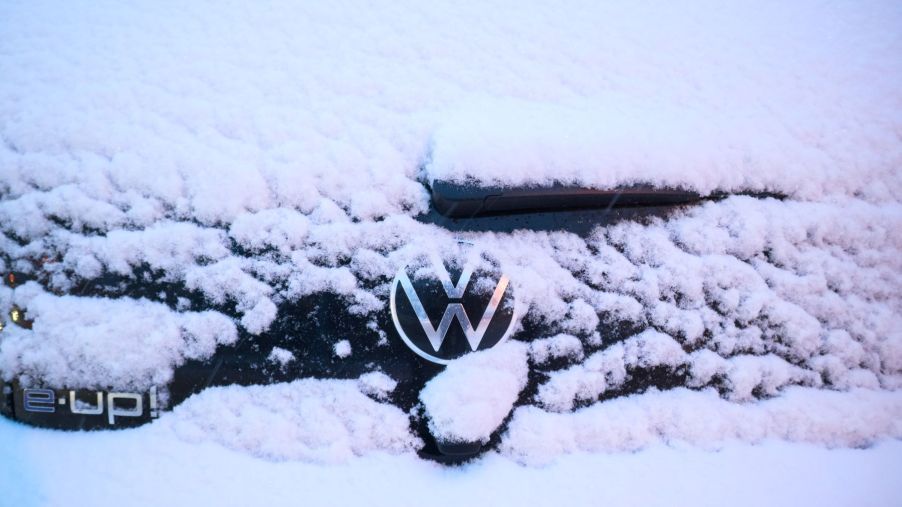
How Much Driving Range Does an EV Lose in the Cold and During Winter?
At this point, most EV drivers know that cold weather can negatively impact the range of their vehicles. It also causes your EV to have longer charging times. That’s because the chemical reactions that allow the battery to run are slowed down whenever there’s an extreme temperature drop.
Exactly how much range can you expect to lose during the winter months? Let’s go over when range loss happens and how you can avoid it.
What’s the optimal battery temperature for EVs?

The best EV battery temperature varies depending on the make and model of your vehicle. However, a temperature between 50° to 90° Fahrenheit is considered average. According to Geotab, most EVs can achieve peak performance when the battery is 70°F.
What cold temperatures affect EV range?
Your EV’s range will generally start to depreciate once exterior temperatures have dipped below 40°F. According to Axios, some vehicles maintain most of their estimated range despite drastic temperature drops. For example, the Hyundai Kona EV and Audi e-tron operate at 93% efficiency in temperatures between 20-30°F.
However, the Chevy Volt might lose as much as 69% of its range in cold weather. A study found by Car and Driver reported that the average EV loses at least 20% of its range in freezing temperatures. InsideHook even mentioned one study from Consumer Reports that cited a 50% loss in efficiency in below-freezing conditions.
If your EV’s heater is on full blast, you could lose 41% of your estimated driving range. According to SolarReviews, you should also be mindful of the last 20% of your EV’s battery. Without that power, your EV might have difficulty charging itself at all if the battery is already too cold.
How to mitigate range loss during the winter
In addition to always keeping the battery at 20%, you should try to park your EV in a garage during winter. While it’s not the warmest area of your home, it will at least give your vehicle some protection from exterior temperatures. Your garage is also an excellent place to recharge the EV’s battery overnight, even if you only have a 120-volt outlet.
Drive Electric Vermont also recommends using heated seats and steering wheels instead of trying to heat the whole cabin. These features can warm your body just as quickly in cold weather and don’t put as much strain on your EV’s power supply.
If you need some extra warmth, keep a few extra blankets in your vehicle. In winter, it’s always a good idea to keep additional layers of clothing in your car for emergencies anyway.
Alternatively, you can preheat your vehicle while it’s still plugged in before you leave your home. Once you’re behind the wheel, switch your EV into ECO mode to extend your battery life. Your EV might not be as fast in this drive mode, but it’s always better to drive cautiously in winter. In fact, you can improve your EV’s mileage by up to 20% if you drive 10 mph slower.
Like with any ICE car, you can maximize your vehicle’s mileage by keeping the tires at the right pressure. This is even more important in freezing temperatures when the air is denser. Always refer to your owner’s manual or the inside of your EV’s doorjamb for each tire’s recommended pressure.
If possible, we also recommend buying an EV with at least 300 miles of range. The Ford Mustang Mach-E Premium is probably the most affordable option, currently starting at $48,775. A Long Range version of the Tesla Model 3 (historically the automaker’s cheapest car) is also planned for release as a 2023 model.


